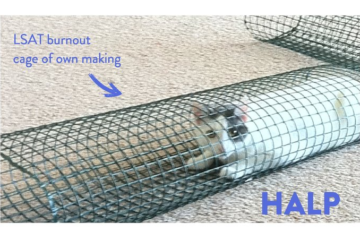I started off teaching the LSAT just like most people do. I read the best books on the market, the Powerscore Bibles. They worked for me. I got my mid-170 and was happily “on my way to HLS” (lol).
When I first started tutoring the LSAT, I didn’t know much more than what was written in the Bibles, and I seriously didn’t even know that very well. You can look at my 2011 Logic Games and roll your eyes for proof.
My first tutoring student was a friend of a friend who had heard that I was “some smart girl who’s really into the LSAT.” I had no clue what I was doing with LSAT beyond my gut instincts, but I’d taught writing for about eight years. I knew that I could teach and relate to students on the struggle bus, so I thought I’d try to help this random girl.
As soon as I sat down with her, I was hooked. Our 2-hour session lasted at least 4. (Also, she got a 174 and went to Columbia. Hey, Melanie!)
But passion only takes you so far as a tutor. It’s cool to be invested in your tutoring students and everything, but that doesn’t mean you’re going to know what to do when you’ve explained the same thing twice and they’re still looking at you like:

Most students eventually need more than a newbie can give, but when you’re a newbie you don’t know what you’re doing, and you don’t know that you don’t know what you’re doing.
About a year in, I had a tutoring student named Brittany, the sweetest person imaginable. Brittany really wanted to improve her score and was willing to work as hard as necessary to make that happen. She’d already taken a class and completed the major books on the market when I met her, and she was ~15 points away from her target score. At this point, the CLIR didn’t exist. Powerful-Provable didn’t exist. Translation didn’t exist. I really didn’t know what I was doing. I didn’t have the goods, but I didn’t know that at the time and neither did Brittany.
A few months into tutoring Brittany, my limited bag of tricks ran out, especially when it came to LR, the section I was supposedly “the best” at. I had this perfect sunbeam of a student sitting in front of me literally crying, saying, “I’ve done everything you said! Why can’t I get better?” I wanted to legally change my name so I could go take the test for her.
I really didn’t know why Brittany couldn’t get better, but there was nothing in the world more important to me in that moment than finding her problem and fixing it.
What was I doing in LR that she wasn’t doing? What was the mystery magic that was making me get questions right? I seriously didn’t know. She knew all the question types. The standard methods weren’t working.
The one thing I did differently was how I always trolled every stimulus before reading the answer choices. Like really, I did this for fun because I thought the stimuli were legit hilariously bad. I did this same thing again and again, mostly because I like to have a good time (in this case, “good time” is defined as silently laughing to myself while taking a standardized test). But that trolling was really way more than I was giving it credit for. It was the critical instinct that Brittany didn’t have. In that moment, the CLIR was born.
I couldn’t stop trolling LR if I tried. It was (and is) just the way my brain works. I developed the CLIR to train Brittany to systematically troll LR. She did, and her score suddenly went way up. It kinda makes sense why the trolling was so effective. Trolling is also known as thinking critically, the thing lawyers and law students are supposed to do a lot. Makes sense to get better at it now, right?
The CLIR has been significantly improved since that day with Brittany, but the idea of a stimulus-based system never would have come to be without her. So thanks, girl. You’re the best.


